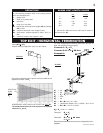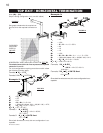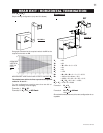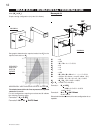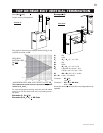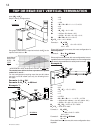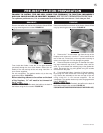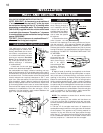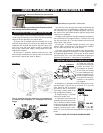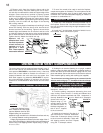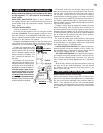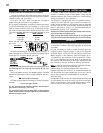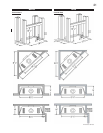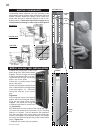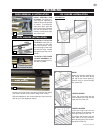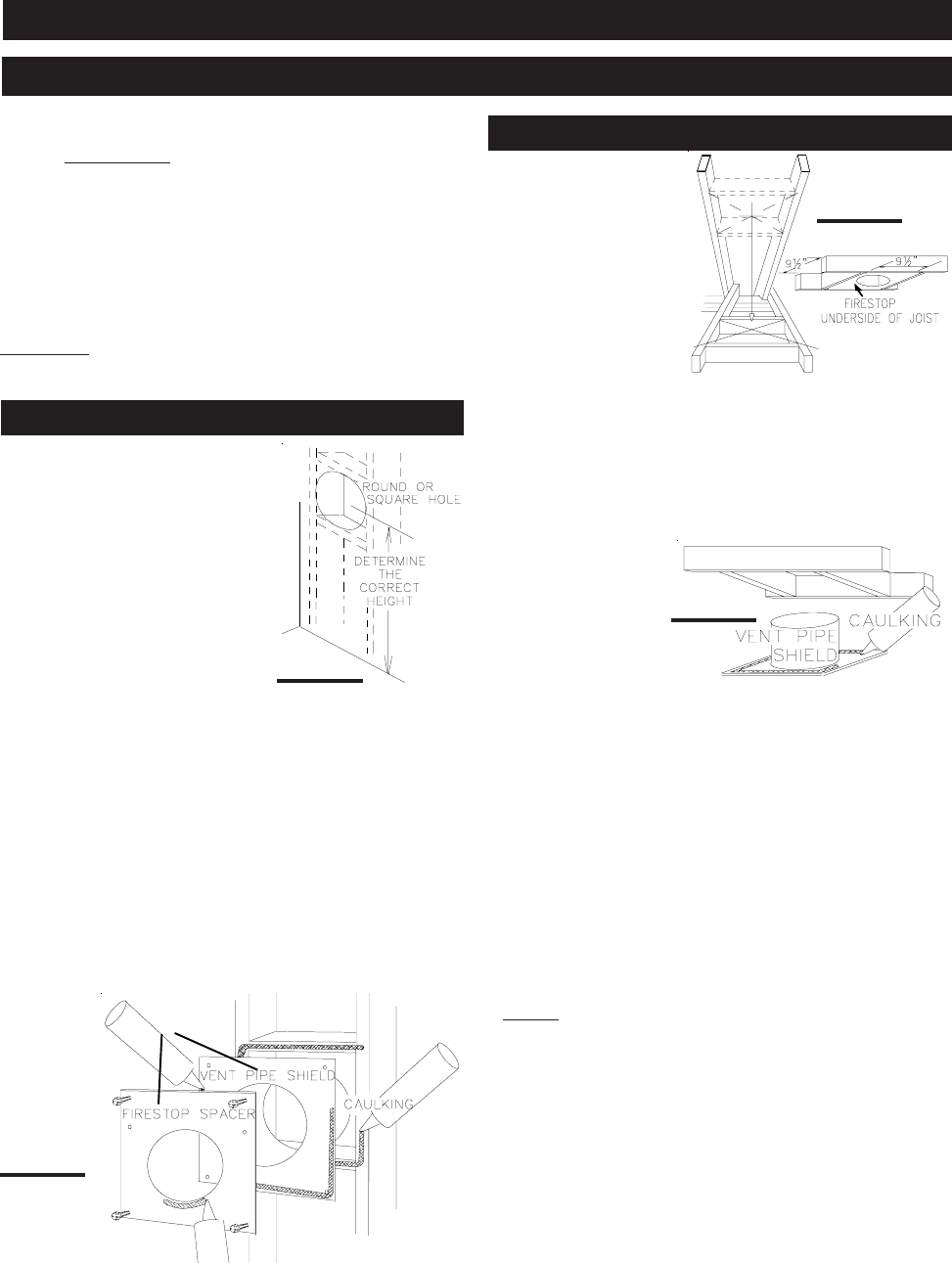
16
W415-0210 / E / 06.25.03
This application occurs
when venting through a
roof. Installation kits for
various roof pitches are
available from your Napo-
leon dealer. See Accesso-
ries to order the specific
kit required.
1. Determine the air ter-
minal location, cut and
frame 9½ inch openings in the ceiling and the roof to pro-
vide the minimum 1 inch clearance between the fireplace
pipe / liner and any combustible material. Try to center the
exhaust pipe location midway between two joist to prevent
having to cut them. Use a plumb bob to line up the center of
the openings. DO NOT FILL THIS SPACE WITH ANY TYPE
OF MATERIAL.
A vent pipe shield
will prevent any ma-
terials such as insu-
lation, from filling up
the 1" air space
around the pipe. Nail
headers between
the joist for extra
support.
2. Apply a bead of caulking (not supplied) to the frame-
work or to the Wolf Steel vent pipe shield plate or equiva-
lent (in the case of a finished ceiling), and secure over the
opening in the ceiling. A firestop must be placed on the
bottom of each framed opening in a roof or ceiling that the
venting system passes through. Apply a bead of caulking
all around and place a firestop spacer over the vent shield
to restrict cold air from being drawn into the room or around
the fireplace. Ensure that both spacer and shield maintain
the required clearance to combustibles. Once the vent pipe
/ liner is installed in its final position, apply sealant be-
tween the pipe / liner and the firestop spacer.
NOTE: Two methods to ensure the air terminal covers
the cut out in the wall are;
1. Where the opening in the outside wall has been cut
10½" tall to provide the 2" clearance from the vent pipe,
terminal extension plate W500-0103 must be used to cover
the opening.
2. The first 12" of vent pipe must have a 2" clearance to
combustible material when the vent pipe exits off the back
of the fireplace. This applies to any finishing material or
insulation in the wall that the vent pipe passes through
within that 12". The clearance from the top of the vent pipe
to the combustible material on the outside surface of the
wall only requires a 1" clearance from the vent pipe.
FIGURE 25
FIGURE 26
FOLLOW THE VENTING INSTRUCTIONS EXACTLY.
NOTE: REAR EXIT - A clearance to combustibles of
1" at the bottom of the vent and 2" at the top must
be maintained during the first 12" of venting when
penetrating combustible walls. The firestop spacer
(W615-0044) supplied with the unit should be used
to maintain this clearance. Thereafter a 1" clearance
to combustibles may be maintained using firestop
spacer (W500-0096).
TOP EXIT - Only a clearance to combustibles of 1"
all around the vent pipe is required.
This application occurs when
venting through an exterior wall.
Having determined the air termi-
nal location, cut and frame a hole
in an exterior wall with a minimum
opening as required. See Note
above. (As an alternative to fram-
ing, a vent pipe shield may be in-
stalled, ensuring a 1" clearance
to combustibles.)
1. Mark and cut the vent pipe
shield to the determined depth of
the combustible wall. Apply a bead of caulking (not sup-
plied) to the framework or to the shield plate (in the case of
a finished wall) and secure the shield through the opening
to the interior wall. The final location of the vent pipe shield
should maintain the required clearance to the 7" vent
pipe / liner. (See note above). Do not fill this cavity with any
type of material. Apply a bead of caulking all around and
place a firestop spacer over the vent shield to restrict cold
air from being drawn into the room or around the fireplace.
Ensure that both spacer and shield maintain the required
clearance to combustibles. Once the vent pipe / liner is
installed in its final position, apply sealant between the
pipe / liner and the firestop spacer.
FIGURE 24
OR
HORIZONTAL INSTALLATION
VERTICAL INSTALLATION
INSTALLATION
WALL AND CEILING PROTECTION
FIGURE 23




